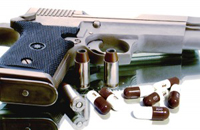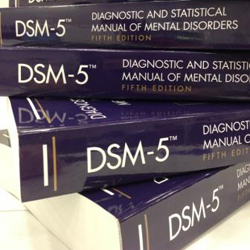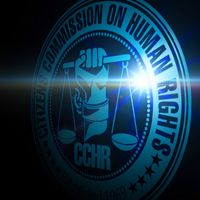By Kelly Patricia O’Meara
Published by CCHR International
The Mental Health Industry Watchdog
May 26, 2016
While lawmakers scramble for increased mental health spending, taxpayers may be shocked to learn what has resulted from the money already provided. In a word, the data are dismal. Despite decades and tens of billions of dollars being poured into mental health services and psychiatric “treatments,” no one appears to be getting better.
Getting to exactly how much money is spent on mental health services year-to-year is difficult to impossible, but there are a number of sources that provide a financial picture that clearly contradicts the mental health industry’s claims of a deficit in funding.
Federal Spending: On a federal level, the National Institute of Mental Health (NIMH) is funded at nearly $1.5 billion for 2016 and the Substance Abuse and Mental Health Services Administration (SAMHSA) received more than $3.6 billion in 2016.[1] And these data do not take into consideration the funding for the considerable mental health services and “treatment” provided by either the Department of Defense or the Veterans Administration.
Now add to the above data the recent study published in Health Affairs, which reveals that in 2013, mental disorders topped the list of most costly conditions, exceeding heart conditions and cancer, with spending at $201 billion.[2] What exactly do taxpayers have to show for this substantial spending?
Psychiatric Drug Use: Nearly 79 million Americans (one-in-four) are currently prescribed mind-altering psychiatric drugs, including antidepressants, antipsychotics, anti-anxiety and ADHD drugs, and among those are eight million children. In fact children are receiving mental health “treatment” at rates that defy all logic.
For example, according to IMS Vector One: National Total Patient Tracker Database for 2013, 4,404,360 children between the ages of 0-17 were prescribed ADHD drugs; 2,165,279 were prescribed antidepressants; 2,132,625 were prescribed anti-anxiety drugs; and 830,836 were prescribed antipsychotics. More than 1 million of these children literally are between the ages of 0-5 and, worse still, more than 270,000 of these are 0-1 year-olds.
But psychiatric drugging is not limited to the youngest among us, as the nation’s elderly appear to be targeted for mental health “treatments” as well. According to the Department of Health and Human Services (HHS) Inspector General, in the first six months of 2007, 14 percent, or a little over 304,000, of the 2.1 million nursing home residents had at least one claim filed with Medicare for an antipsychotic drug.[3]
Social Security Disability: The number of adults receiving disability payments due to psychiatric mood disorders rose from about 425,000 in 1994 to nearly 1.4 million in 2013. During this period, the percentage of the population taking antidepressants quadrupled from 1.8 percent to 9 percent.[4]

Twenty-two warnings on psychiatric drugs causing violence have been issued by international drug regulatory agencies.
Psychiatric Drug Warnings/Violence: With the prescribing of psychiatric drugs come serious warnings, including the Food and Drug Administration’s (FDA) “Black box” warning for suicidality on all antidepressants on the market. Violent behavior, including aggression, mania, psychosis, and physical assault also are known adverse effects associated with psychiatric drugs and, according to the FDA’s MedWatch data, between 2004-2012 nearly 15,000 reports of violent side effects associated with psychiatric drugs were reported.
Twenty-two warnings on psychiatric drugs causing violence have been issued from international drug regulatory agencies. These warnings are further supported by the 2015 study published in PLOS Medicine, which found that young adults between the ages of 15 and 24 were nearly 50 percent more likely to commit homicide, assault, robbery, arson, kidnapping, sexual offense and other violent crime when taking an antidepressant than when they weren’t taking the psychiatric drug.[5]
And according to the Institute for Safe Medication Practices, eight of the top ten legal drugs linked to violence are psychiatric drugs, including the antidepressants Pristiq, Effexor, Luvox, Strattera, Paxil, Prozac, Amphetamines (ADHD drugs) and the benzodiazepine, Halcion.[6]
Electroconvulsive “Therapy” ECT: 100,000 Americans are electroshocked every year and if the American Psychiatric Association (APA) has its way, that number will explode.[7] In psychiatric speak, many patients have become “resistant” to many of the psychiatric drug “treatments” and, therefore, in order to elicit the desired behavioral outcome, the APA is looking to electroconvulsive therapy, or ECT, even on children, for behavioral results.[8]
In the case of using ECT on a child, whose brain still is developing, the ECT “procedure” involves sending up to 460 volts of electricity through the brain, shocking it and causing a seizure lasting up to 60 seconds. The ECT “treatment” can cause skin burns, physical trauma (including fractures, contusions, injury from falls, dental and oral injury) prolonged or delayed onset seizure and complications, including heart attack and even death.[9] ECT damages the brain, which can cause permanent memory loss, confusion and serious cognitive dysfunction.[10]

Billions of dollars and decades of research have failed to identify even one biological cause for any mental disorder.
Psychiatric Diagnosis: Despite the enormous financial investment flooding into the mental health community, the ever-increasing numbers of mental disorder diagnoses, fueling the psychiatric industry, remain medical enigmas. Billions of dollars and decades of research have failed to identify even one biological cause for any mental disorder. Former Director of the National Institute of Mental Health (NIMH), Thomas Insel, accurately described the completely subjective nature of psychiatric diagnosing when he said of the Diagnostic and Statistical Manual of the APA (DSM-5) that its “weakness is its lack of validity.” Psychiatry’s diagnosing manual is, according to Insel, “at best, a dictionary, creating a set of labels and defining each…diagnoses are based on a consensus about clusters of clinical symptoms, not any objective laboratory measure.”[11]
 All things considered, one could argue that the data suggests the greater the funding for mental health services, the more mentally ill the nation becomes. Moreover, there are absolutely no protections or recourse for those victimized by the mental health industry. It is for this reason that CCHR has drafted a Mental Health Declaration of Human Rights, as it is vital that the following rights be recognized and that all countries adopt this Declaration.
All things considered, one could argue that the data suggests the greater the funding for mental health services, the more mentally ill the nation becomes. Moreover, there are absolutely no protections or recourse for those victimized by the mental health industry. It is for this reason that CCHR has drafted a Mental Health Declaration of Human Rights, as it is vital that the following rights be recognized and that all countries adopt this Declaration.
Kelly Patricia O’Meara is an award-winning former investigative reporter for the Washington Times’ Insight Magazine, penning dozens of articles exposing the fraud of psychiatric diagnosis and the dangers of the psychiatric drugs—including her ground-breaking 1999 cover story, “Guns & Doses,” exposing the link between psychiatric drugs and acts of senseless violence. She is also the author of the highly acclaimed book, Psyched Out: How Psychiatry Sells Mental Illness and Pushes Pills that Kill. Prior to working as an investigative journalist, O’Meara spent sixteen years on Capitol Hill as a congressional staffer to four Members of Congress. She holds a B.S. in Political Science from the University of Maryland.
References:
[1] “HHS FY2016 Budget in Brief, National Institutes of Health (NIH)” U.S. Department of Health & Human Services, accessed May 26, 2016, http://www.hhs.gov/about/budget/budget-in-brief/nih/index.html; “HHS FY2016 Budget in Brief, Substance Abuse and Mental Health Services Administration (SAMHSA),” U.S. Department of Health & Human Services, accessed May 26, 2016, http://www.hhs.gov/about/budget/budget-in-brief/samhsa/index.html.
[2] Charles Roehrig, “Mental Disorders Top The List Of The Most Costly Conditions In The United States: $201 Billion,” Health Affairs, May 2016, http://content.healthaffairs.org/content/early/2016/05/13/hlthaff.2015.1659.abstract.
[3] Daniel R. Levinson, Inspector General, “MEDICARE ATYPICAL ANTIPSYCHOTIC DRUG CLAIMS FOR ELDERLY NURSING HOME RESIDENTS,” OFFICE OF INSPECTOR GENERAL, Department of Health and Human Services, May 2011, http://oig.hhs.gov/oei/reports/oei-07-08-00150.pdf.
[4] R. Rosenheck. “The growth of psychopharmacology in the 1990s.” Int J of Law and Psychiatry 28 (2005):467-83. U.S. Social Security Administration, Annual Statistical Report on the Social Security Disability Insurance Program, and SSI Annual Statistical Report, 2010-2013; U.S. Dept. of Health and Human Services, Centers for Disease Control and Prevention. “Health, United States, 2014.”
[5] Yasmina Molero, et al., “Selective Serotonin Reuptake Inhibitors and Violent Crime: A Cohort Study,” PLOS Medicine, September 15, 2015, http://journals.plos.org/plosmedicine/article/asset?id=10.1371%2Fjournal.pmed.1001875.PDF.
[6] Thomas J. Moore, et al, “Prescription Drugs Associated with Reports of Violence Towards Others,” PLOS One, December 2010, Vol. 5, Iss. 12, e15337, http://journals.plos.org/plosone/article/asset?id=10.1371%2Fjournal.pone.0015337.PDF.
[7] “Electroconvulsive Therapy (ECT),” Mental Health America, http://www.mentalhealthamerica.net/ect.
[8] Letter to Robert M. Califf, M.D., Commissioner, U.S. Food and Drug Administration, from the American Psychiatric Association, March 10, 2016, p. 2, https://psychiatry.org/psychiatrists/advocacy/federal-affairs/patient-safety, click on: “March 10: APA Comments to the FDA Concerning the Proposed Order and Draft Guidance related to ECT Devices.”
[9] “Electroconvulsive Therapy (ECT) Devices for Class II Intended Uses,” Draft Guidance for Industry, Clinicians and Food and Drug Administration Staff, December 29, 2015, http://www.fda.gov/downloads/MedicalDevices/UCM478942.pdf.
[10] “Electroconvulsive Therapy (ECT) Devices for Class II Intended Uses,” Draft Guidance for Industry, Clinicians and Food and Drug Administration Staff, December 29, 2015, http://www.fda.gov/downloads/MedicalDevices/UCM478942.pdf.
[11] Thomas Insel, “Director’s Blog: Transforming Diagnosis,” National Institute of Mental Health, April 29, 2013, http://www.nimh.nih.gov/about/director/2013/transforming-diagnosis.shtml.



